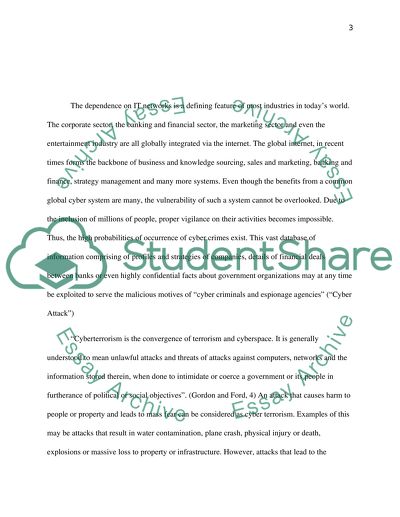Cite this document
(“Cyber Terrorism Research Paper Example | Topics and Well Written Essays - 2500 words”, n.d.)
Retrieved de https://studentshare.org/information-technology/1391253-cyber-terrorism
Retrieved de https://studentshare.org/information-technology/1391253-cyber-terrorism
(Cyber Terrorism Research Paper Example | Topics and Well Written Essays - 2500 Words)
https://studentshare.org/information-technology/1391253-cyber-terrorism.
https://studentshare.org/information-technology/1391253-cyber-terrorism.
“Cyber Terrorism Research Paper Example | Topics and Well Written Essays - 2500 Words”, n.d. https://studentshare.org/information-technology/1391253-cyber-terrorism.


